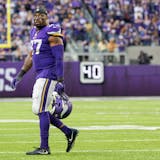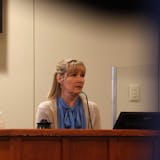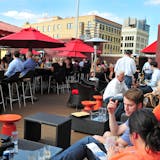Minnesota bassist Liz Draper has played with some of the area’s most recognizable acts, including Low, Charlie Parr and the Okee Dokee Brothers. When a band needs either an electric or upright bassist (or both), they call Draper. Now she’s doing the calling.
Draper is in the midst of a residency at Berlin, the newish jazz club in Minneapolis’ North Loop. For every performance, she chooses different collaborators. For her next gigs, on Sunday she’ll be joined by Iranian vocalist Aida Shahghasemi and violinist Sara Pajunen. On Monday, she’ll play with Circuit City, a band featuring guitarists Alan Sparhawk and Jeremy Ylvisaker, plus percussionist Davu Seru.
Meanwhile, Draper tours about one week a month with Iowa country-folk singer/songwriter Iris DeMent and curates a monthly music series at Mankato’s Carnegie Art Center. And she will accompany Pieta Brown on Oct. 26 at the Cedar Cultural Center’s 35th anniversary concert.
Draper, who splits her time between Minneapolis and Mankato, explained how taxing it is mentally and spiritually to put together so many different combos in a compact period. Here are excerpts.
Q: You did a residency last year at the Icehouse. What appeals to you about doing residencies?
A: It gives me an opportunity to form ensembles that I may not otherwise have an opportunity to play with and experiment a little bit. It’s very exciting for me to explore doing my own thing because I’m so often playing in other people’s ensembles, which is great but that’s more of the traditional bass player role, and this is where I get to lead projects.
Q: How do these gigs work — do you have rehearsals, do you talk to the musicians about a conceptual plan, do you improvise?
A: All of the above. It depends on the group. On last Sunday, I’ve played on and off for years with Davu [Seru] and a few times with Bryan [Murray] since he moved to Minnesota, so we all knew the idiom we were seeking so we didn’t have any rehearsals. We originally talked about charts and then that day, we are in love with improv and [said] let’s do that. And it was a success.



